
Ein Multi über die älteste Berliner Bahngeschichte. |
|

This multi takes you back to the early days of rail transport in Berlin. |
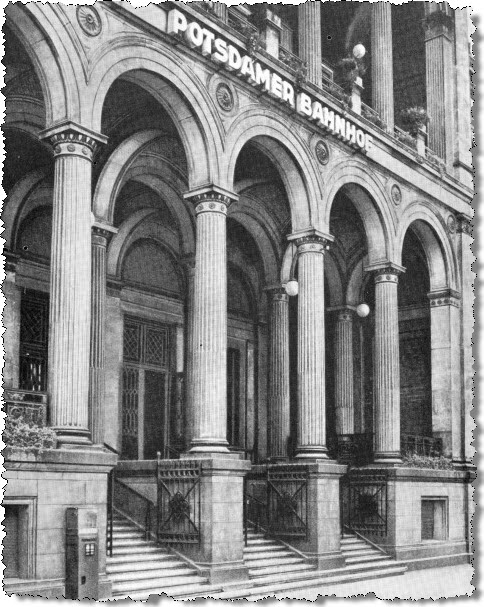
|
Zur Gegend:
Der Potsdamer Bahnhof wurde als erster Bahnhof Berlins 1838 direkt vor dem Potsdamer Tor der Berliner Zollmauer eröffnet. In der Ausführung eines Kopfbahnhofes endete hier die erste preußische Eisenbahnlinie in Richtung Potsdam. Später verließen diesen Bahnhof auch die Züge in Richtung Brandenburg, Magdeburg und in den Raum Hannover und das Ruhrgebiet.
|
|
Interesting facts about the area:
Located on the borders of the Berlin tariff wall right outside Potsdam Gate, the Potsdamer Bahnhof was Berlin’s first train station when opened in 1838. Constructed as a terminus station it formed one end of the first Prussian railway line linking Potsdam to Berlin. Later, also trains heading for Brandenburg, Magdeburg, the Hanover and the Ruhr Area started from here.
|
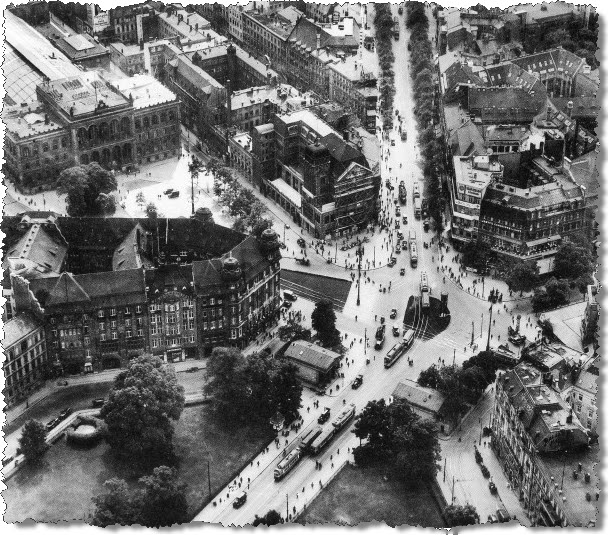
|
Der erste Potsdamer Bahnhof bestand bis 1869. Der Neubau wurde an gleicher Stelle 1872 eingeweiht. Er verfügte über drei Bahnsteige und fünf Gleise. Die Hallenkonstruktion war 173 Meter lang und 36 Meter breit.
|
|
The original Potsdamer Bahnhof existed until 1869. The new train station was inaugurated on the same site in 1872. It now had three platforms and five tracks and its hall measured 173 meters in length and 36 meters in width.
|
Bald reichte aber auch diese Kapazität nicht mehr aus. Die Abfertigung der Vorortzüge der Ring- und Wannseebahn wurde 1891 ausgelagert und es entstanden eigene Kopfbahnhöfe in unmittelbarer Nähe südlich des Fernbahnhofes. Bis in die 1930er-Jahre bestand der Potsdamer Bahnhof also aus drei Teilbahnhöfen:
| - |
auf der Westseite der zweigleisige Wannseebahnhof für die gleichnamige Strecke |
| - |
in der Mitte der fünfgleisige Fernbahnhof |
| - |
auf der Ostseite der viergleisige Ring- und Vorortbahnhof für die Vorortstrecken nach Lichterfelde Ost und Zossen sowie für die Südringzüge (Südringspitzkehre) |
|
|
Despite the enlargement, the station’s capacity soon became too small again. In 1891, services for the suburban trains of the Ring railway line and the Wannsee railway line had to be displaced to individual terminal stations, that were constructed right to the south of the main station. From then on until the 1930s Potsdamer Bahnhof therefore consisted of three sub-stations:
| - |
on the western side the dual-track train station of the Wannsee railway line |
| - |
the main train station with its five tracks in the middle |
| - |
on the eastern side the four-track train station for the suburban lines to Lichterfelde Ost and Zossen as well as the southern circular Ring railway lines (Südringspitzkehre / Southern Ring hairpin bend). |
|
Nach erheblichen Zerstörungen im Zweiten Weltkrieg stellte die Reichsbahn 1945 noch vor Ende des Krieges den Betrieb des Bahnhofes ein. Bis 1946 verkehrten allerdings noch S-Bahnzüge auf dem oberirdischen Potsdamer Ringbahnhof, da der unterirdisch verlaufende Nord-Süd-S-Bahn-Tunnel überflutet war.
|
|
After having been considerably damaged during World War II, the railway station was given up by the Reichsbahn Administration in 1945 before the war ended. Until 1946 though, trains of the S-Bahn operated on the above-ground platforms of the Potsdamer Ring station, as the underground S-Bahn tube running from North to South was flooded.
|
Der heutige Regionalbahnhof "Potsdamer Platz" hat mit dem alten Fernbahnhof so gut wie nichts mehr zu tun. Das Einzige, was beide Bahnhöfe gemein haben, ist die südliche Trassenführung, die heute allerdings unterirdisch verläuft.
Die Lage des ehemaligen Gleisfelds entspricht heute weitestgehend dem langgestreckten Tilla-Durieux-Park zwischen Potsdamer Platz und Landwehrkanal.
|
|
Today's station "Potsdamer Platz" for regional rail lines has nothing to do with the old train station any more. The only thing they have in common is the southern rail track route which, however, runs underground nowadays. What formerly was the track field now - by and large - equals the elongated Tilla Durieux-Park, located between Potsdamer Platz and Landwehr Canal.
|
Zum Cache:
Auch wenn heute fast gar nichts mehr an diesen alten Bahnhof erinnert, wollen wir versuchen, Dir die Lage und Ausrichtung des alten Gebäudes zu verdeutlichen. Im südlichen Abschnitt werden wir Dir sogar noch Zeugnisse der Bahnanlage aus der Zeit vor dem zweiten Weltkrieg zeigen können.
|
|
Find the Cache:
Although hardly any traces of this old train station can be found today, we will try to explain to you the position of the original building. In the southern part of your way, we can even show you relicts of the railway system dating back before World War II.
|
Auf geht's !
Ein wichtiger Hinweis für alle Paperless-Cacher:
Ohne die Bilder im Listing funktioniert dieser Multicache nicht !
|
|
Let's go !
One important note for all paperless-cacher:
This multi dosn't work without the pictures in the listing !
|
Station 1:
(Startkoordinaten)
Welches Dreieck passt besser ?
|
|
Stage 1:
(Start coordinates)
Which triangle fits the better?
|
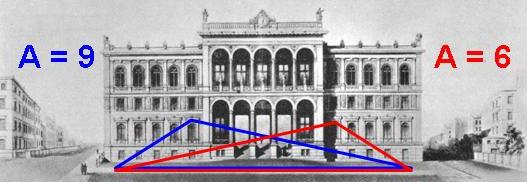
|
Station 2:
Eine Schranke gab es hier sicherlich nicht. Jedoch befindet sich heute an dieser Stelle eine ähnliche Konstruktionen. Wieviel gibt es davon?
|
|
Stage 2:
Certainly there was no barrier here in former times. But today there is a similar construction at this point. How many of these constructions are there?
|
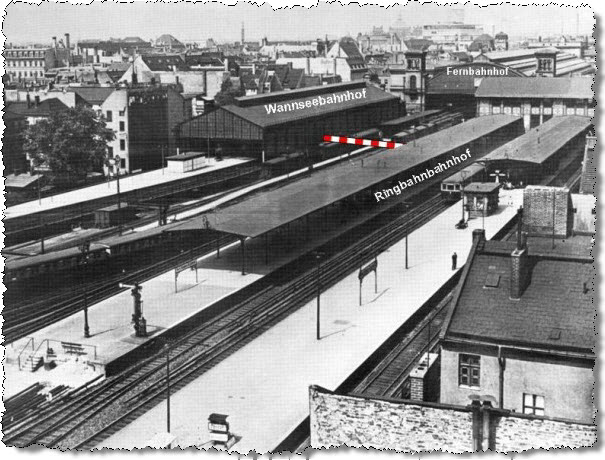
|
B = Anzahl
|
B = Number
|
|
Station 3:
Suche an der markierten Stelle nach einer dreistelligen Zahl !
|
|
Stage 3:
Go to the marked spot and look for a three-digit number!
|

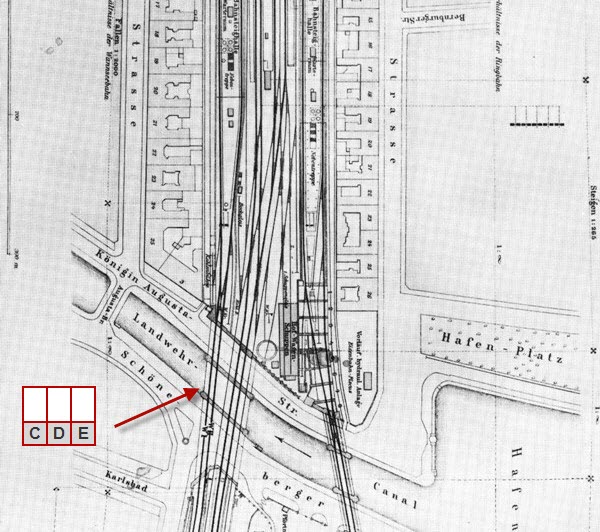
|
Von Station 3 aus schaust Du 150 Meter in süd-östliche Richtung. Du erkennst eine andere aber noch intakte und frequentierte Gleisanlage in ca. fünf Metern Höhe. Folge dieser Gleisanlage in südlicher Richtung entlang einer Strecke von 250 Metern. Bei Regen wäre dies sogar trockenen Fußes möglich.
|
|
From station 3, turn South-East and look for a different but still intact and frequently used railroad track about 150 metres away and five meters above ground. Follow this track further to the south for about 250 meters. Should it be raining, this would be even possible without getting wet.
|
Station 4:
Auf der rechten Seite kannst Du noch die alten Viaduktbögen der Ringbahn (Südringspitzkehre) erkennen. Auf diesem Viadukt fuhren bis 1946 noch S-Bahnzüge mit dem Ziel Potsdamer Bahnhof.
|
|
Stage 4:
On the right you can still see old railway viaduct arches of the former Ring railway line (Südringspitzkehre / Southern Ring hairpin bend). It was until 1946, that S-Bahn trains crossed this viaduct heading for Potsdamer Bahnhof.
|
Auch wenn nicht mehr beschriftet, welche Nummer kann dem nördlichsten noch erhaltenen Viaduktbogen zugeordnet werden ?
|
|
Although not labelled any more, which number may be assigned to the most northernly of the preserved viaduct arches?
|
| ___ |
___ |
|
= zweistellige Nummer / two-digit number |
| F |
G |
|
|
|
|
Station 5:
(Finalkoordinaten)
Der Final befindet sich bei:
|
|
Stage 5:
(Final coordinates)
You will find the Final Stage here:
|
| N 52° |
[F] [C] |
. |
[D] [A] [F*E] |
| E 13° |
[B-E] [B-E] |
. |
[F+G] [C-A] [B ] |
|
In der Finaldose findest Du einen Teil für die Lösung des Mystery-Caches:
|
|
|

|
|
|
|